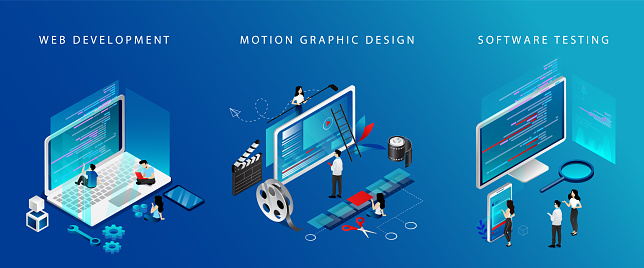In the ever-evolving world of front-end development, the choice of the right tool can be a pivotal factor in the success of your web projects. Two powerful contenders in this arena are Bootstrap, a front-end framework, and JavaScript, a versatile programming language often employed for front-end development. In this comprehensive article, we will dive into the Bootstrap vs. JavaScript debate, offering an in-depth analysis of their features, use cases, and performance. By the end of this exploration, you will have the knowledge necessary to make well-informed decisions for your front-end development endeavors.
Bootstrap: The Front-End Framework
Overview:
Bootstrap, initially developed by Twitter and now a thriving open-source project, has emerged as a cornerstone of front-end web development. It offers a curated collection of pre-designed UI components and an adaptive grid system for responsive designs.
Key Features:
- Responsive Grid System: Bootstrap’s grid system simplifies the creation of responsive layouts, ensuring seamless compatibility across a wide array of devices and screen sizes.
- Pre-designed Components: The framework presents a wealth of pre-built UI components, including navigation bars, forms, modals, and carousels.
- Theming: Bootstrap supports theming, empowering developers to customize the visual aesthetics of their projects.
- Community and Ecosystem: Bootstrap boasts a vast community and an abundance of third-party plugins and themes.
Use Cases:
- Rapid prototyping and development of responsive websites.
- Projects that require a comprehensive suite of pre-built UI components.
- Developers proficient in HTML, CSS, and JavaScript.
External Links:
http://informationarray.com/2023/09/28/bootstrap-vs-tailwind-css-a-comprehensive-comparison/
JavaScript: The Swiss Army Knife of Front-End
Overview:
JavaScript is a versatile programming language employed not only for front-end but also back-end development. It empowers developers to craft dynamic and interactive web applications.
Key Features:
- Interactivity: JavaScript provides the capability to infuse interactivity into web pages, enabling features such as real-time updates, form validation, and captivating animations.
- DOM Manipulation: It facilitates manipulation of the Document Object Model (DOM), facilitating dynamic changes to web page content.
- Event Handling: JavaScript enables the handling of user interactions, including clicks, mouse movements, and keyboard inputs.
- Extensive Libraries: The JavaScript ecosystem boasts an extensive array of libraries and frameworks, including React, Angular, and Vue.js.
Use Cases:
- Building interactive and dynamic web applications.
- Enhancing user experience through real-time updates and client-side validation.
- Full-stack development, as JavaScript is versatile enough to be used on both the front-end and back-end.
External Links:
http://informationarray.com/2023/09/27/kotlin-vs-python-a-comprehensive-comparison/
Bootstrap vs. JavaScript: A Comprehensive Comparison
To assist you in making an informed decision, let’s present a side-by-side comparison of Bootstrap and JavaScript in a tabular format:
| Feature | Bootstrap | JavaScript |
|---|---|---|
| Type | Front-end framework | Programming language |
| UI Components | Abundant pre-built | Customizable |
| Grid System | Yes | N/A |
| Theming | Yes | N/A |
| Interactivity | Limited (requires JS) | Extensive |
| DOM Manipulation | Limited (requires JS) | Extensive |
| Learning Curve | Moderate | Moderate to steep |
| Community and Ecosystem | Vast | Vast |
FAQs
1. Can I use Bootstrap with JavaScript?
Absolutely, Bootstrap often relies on JavaScript to enhance interactivity and functionality. Numerous Bootstrap components require JavaScript to function as intended.
2. Is JavaScript exclusively for front-end development?
No, JavaScript is a versatile language used for both front-end and back-end development. Technologies like Node.js enable JavaScript to operate on the server-side.
3. Which is better for complex web applications?
JavaScript is better suited for complex web applications due to its extensive interactivity and DOM manipulation capabilities. Bootstrap can be effectively utilized alongside JavaScript to augment the functionality of UI components.
4. Is JavaScript proficiency required to use Bootstrap?
While not mandatory, possessing a foundational understanding of JavaScript can be advantageous in customizing and extending Bootstrap’s capabilities.
In conclusion, the choice between Bootstrap and JavaScript hinges on the specific requirements of your project and your familiarity with these tools. Bootstrap excels in swiftly constructing responsive websites laden with pre-designed components, while JavaScript offers boundless potential for crafting interactive and dynamic web applications. In many scenarios, they complement each other, with JavaScript enhancing Bootstrap’s capabilities. Base your decision on the distinct needs of your front-end development projects, and you’ll be well-equipped for success.









